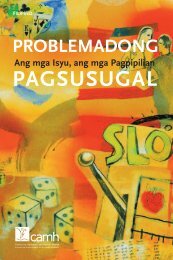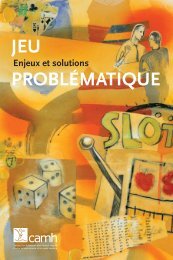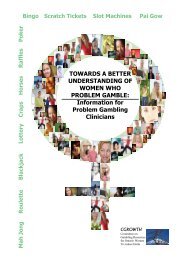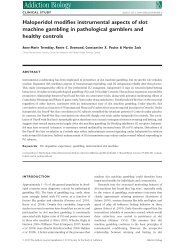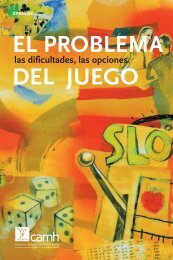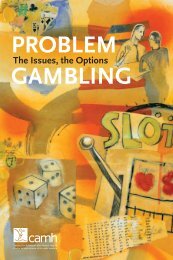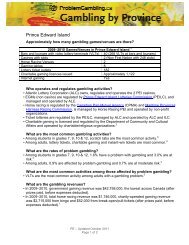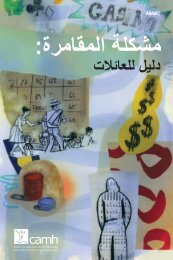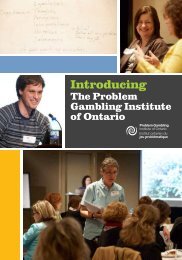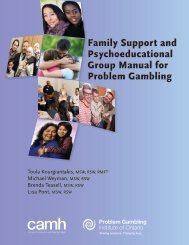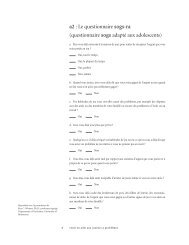Youth Making Choices: Gambling Prevention Program
Youth Making Choices: Gambling Prevention Program
Youth Making Choices: Gambling Prevention Program
Create successful ePaper yourself
Turn your PDF publications into a flip-book with our unique Google optimized e-Paper software.
Unit 1: Risk and RewardLesson PlanMinds On> Establishing a positive learning environment> Connecting to prior learning and/or experiences> Setting the context for learningConnectionsL: LiteracyML: MathematicalLiteracyAfL, AoL: Assessmentfor/of LearningIndividual/Pairs/Small Groups• Complete Student Resource 1: What’s at Risk When…? Facilitate adiscussion of student examples.• In the same groups, students generate a list of popular rewards: fame,fortune, wealth, etc. Groups share with the class. Use a graphic organizer.• Select one reward. Develop a scenario about someone becoming overlyfocused on the reward and what he or she gains or risks losing. Studentspresent the scenario to the class. Class assesses the reality of the situation.AfL: List, Scenario,Anecdotal CommentsAction> Introducing new learning or extending/reinforcing prior learning> Providing opportunities for practice and application of learning (guided > independent)Whole Class Discussion• Introduce the idea that as children our decisions are often closelyregulated by parents, teachers and other authority figures. As we movethrough adolescence into young adulthood, we have more freedom tomake choices. Choice can be made impulsively, based on what feels goodin the moment or after thinking about how much risk is involved and thepotential benefits and/or negative consequences of becoming involved in,or deciding not to do, a certain activity.• Introduce the idea that decision making is related to developmental age.Have students complete Student Resource # 2: Age-Related Stages ofDecision <strong>Making</strong> to provide examples of the type of decisions that aremade by parents and by the individual as a person matures. This activityhighlights the changes in the decision-making role as a child moves fromtotally parent-decided to independent decision making. Introduce the ideathat decision making is related to developmental age.• Introduce the idea that reward is a driving force in decision making.What individuals perceive to be rewarding motivates them to take risks.Sometimes the reward becomes so compelling that risk can be minimized,rationalized or simply forgotten.• Personal interest and desire motivate individuals to take risk. Decisionmaking is the process of deciding whether to take risk or not on the basisof weighing the potential benefits versus potential negative consequencesof taking a risk.AfL: AnecdotalComments<strong>Youth</strong> <strong>Making</strong> <strong>Choices</strong>: <strong>Gambling</strong> <strong>Prevention</strong> <strong>Program</strong>www.Problem<strong>Gambling</strong>.ca1.4




